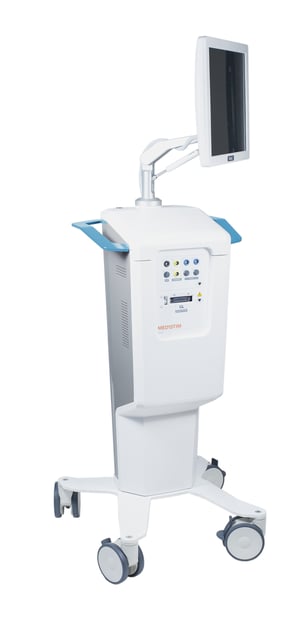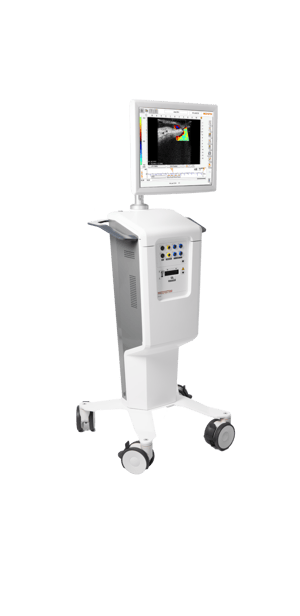MiraQ™ Cardiac

A dual technology for maximum precision and efficiency: The MiraQ™ system is the only one of its kind that combines ultrasound imaging and TTFM (transit time flow measurement). It provides instant feedback during procedures, allowing cardiac surgeons to make decisions and revisions in real time. This on-the-spot approach minimizes the risk of post-operative complications and additional surgeries, ensuring the best possible outcomes for patients.
- A high-frequency ultrasound imaging probe provides high-resolution near-field images. This technique, enhanced by color flow and Pulsed Wave (PW) Doppler modes, allows for the precise detection and visualization of blood flow and flow velocity.
- TTFM measures the difference in transit time of an ultrasound beam through blood flow. The TTFM probes utilize this technology to accurately measure blood volume flow intraoperatively.
- With the spatial information from ultrasound imaging and the quantitative data from TTFM, surgeons have real-time insights into the graft performance.
- MiraQ™ Cardiac identifies issues such as occluded anastomosis, which can then be corrected immediately.
- The probes are approved for direct contact with the heart (risk class III).
- Side-by-side screen assessments: You can compare any measurement against a reference measurement, evaluate improvement and perform functional tests on grafts, and store and report compared results with all values and indexes.
- Easy OR integration: You can connect to external screens using display port and hospital information systems with DICOM.
- Synchronized curves: You can interface other measurements (e.g. ECG or pressure) and have them synchronized with the flow curves for the most precise graft patency assessment.
- Convenient design: Interactive display, storage for manuals and cables, flexible monitor arm, rotatable screen.
Clinical retrospective study 2022
“The use of TTFM is independently associated with a reduced incidence of postoperative myocardial lesions during off-pump coronary bypass surgery. The TTFM procedure in OPCABG deserves to be actively promoted to reduce the incidence of postoperative myocardial injury.”
Quan et al. J Card Surg 2022. DOI:10.1111/jocs.16818
Propensity score analysis 2022
“Even if associated with longer cardiopulmonary bypass times, intraoperative graft flow measurement with TTFM reduces MACE occurrence and it should be recommended for graft evaluation in arterial coronary artery bypass grafting surgery.”
Laali et al. Interact CardioVasc Thorac Surg 2022. DOI:10.1093/icvts/ivac065.
Retrospective review 2022
“High-frequency ultrasound/TTFM use differentially impacts strategy changes and graft revision rates in different technical circumstances of CABG [coronary artery bypass grafting].”
Ethan et al. Eur J Cardiothorac Surg 2022. DOI: 10.1093/ejcts/ezab239
Systematic review 2021
“...although TTFM use may increase the costs and duration of the procedure and requires a learning curve, its cost/benefit ratio seems largely favorable, in view of the potential clinical consequences of graft dysfunction. These consensus statements will help to standardize the use of TTFM in clinical practice and provide guidance in clinical decision-making.”
Gaudino et al. Circulation 2021. DOI: 10.1161/CIRCULATIONAHA.121.054311



